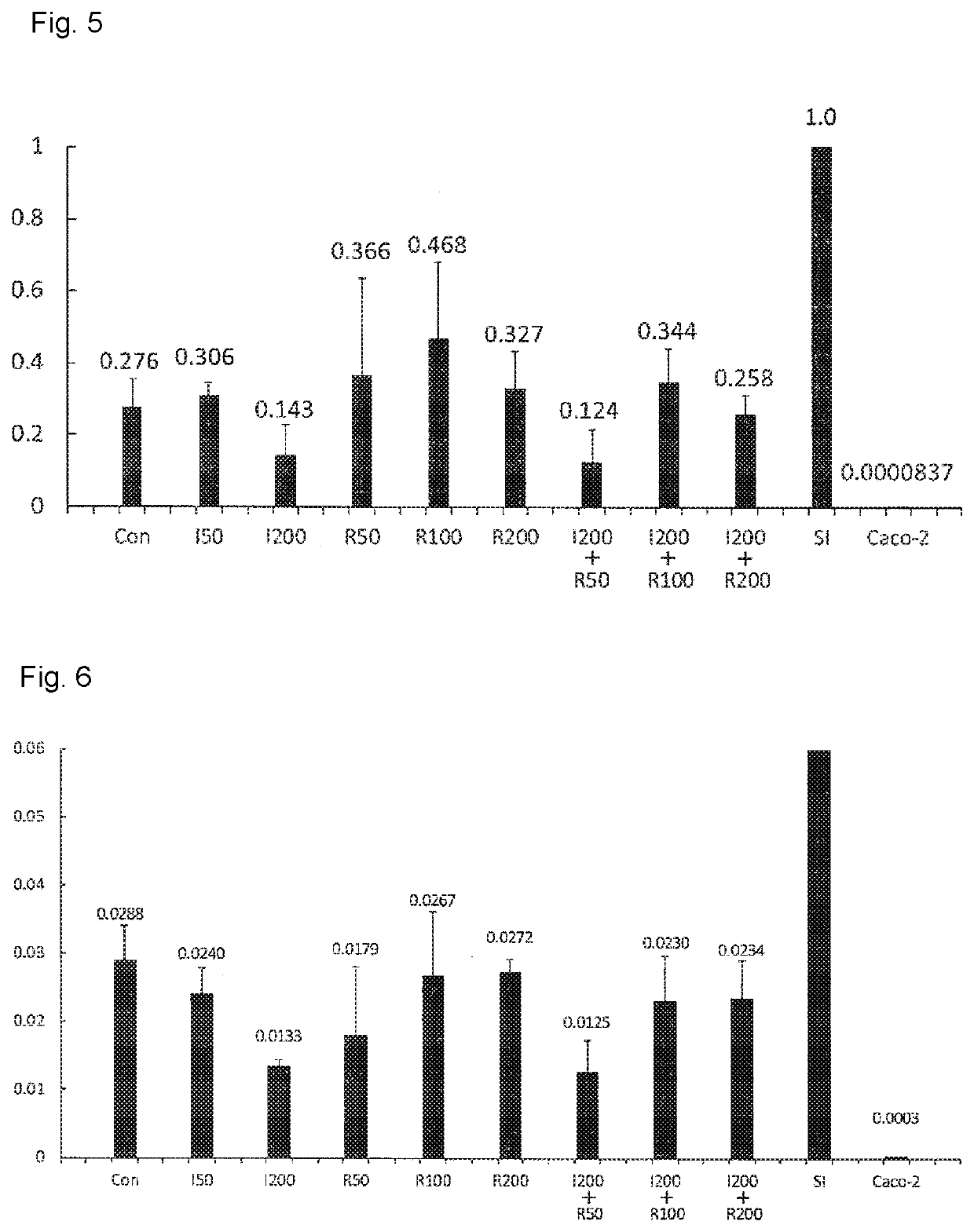Maintenance culture of induced pluripotent stem cell-derived intestinal stem cells
a technology of intestinal epithelial cells and stem cells, which is applied in the field of maintaining culture of induced pluripotent stem cells-derived intestinal stem cells, can solve the problems of enormous time and cost, and achieve the effect of maintaining the properties of the cells
- Summary
- Abstract
- Description
- Claims
- Application Information
AI Technical Summary
Benefits of technology
Problems solved by technology
Method used
Image
Examples
example 1
4-1. Example 1 of Differentiation Step
[0086]In this example, intestinal stem cell-like cells are cultured in the presence of one or more compounds selected from the group consisting of an MEK1 inhibitor, a DNA methylation inhibitor and a TGFβ receptor inhibitor (hereinafter also referred to as “first inducing)factor(s)” and EGF (hereinafter also referred to as a “second inducing factor”), so that the intestinal stem cell-like cells are allowed to differentiate into intestinal epithelial cell-like cells. Typically, the cell population obtained by applying the culture method of the present invention or a part thereof is subjected to a differentiation step without selection. On the other hand, intestinal stem cell-like cells may be selected from the cell population obtained by applying the culture method of the present invention, and may be then subjected to a differentiation step. Selection of intestinal stem cell-like cells may be carried out, for example, by employing a flow cytomet...
example 2
4-2. Example 2 of Differentiation Step
[0097]In this example, the intestinal stem cell-like cells obtained by applying the culture method of the present invention are cultured in the presence of an MEK1 inhibitor, a DNA methylation inhibitor, a TGFβ receptor inhibitor and EGF (hereinafter this condition is referred to as a “first condition”) and under conditions in which cAMP is supplied to the cells (hereinafter this condition is referred to as a “second condition”), so that the intestinal stem cell-like cells are allowed to differentiate into intestinal epithelial cell-like cells. Typically, the cell population obtained by applying the culture method of the present invention or a part thereof is subjected to a differentiation step without selection. On the other hand, from a cell population obtained by applying the culture method of the present invention, intestinal stem cell-like cells may be selected, and thereafter, a differentiation step may be carried out on the selected cells...
examples
A. Development of Novel Culture Method of Human iPS Cell-Derived Intestinal Stem Cell-Like Cells
[0145]Aiming for establishing a culture method capable of maintaining and / or proliferating human iPS cell-derived intestinal stem cell-like cells, while maintaining the properties of intestinal stem cells, the following studies have been conducted.
1. Method
(1) Cells
[0146]Human iPS cells (iPS-51: Windy) were prepared by introducing octamer binding protein 3 / 4 (OCT3 / 4), sex determining region Y-box 2 (SOX2), kruppel-like factor 4 (KLF4), and v-myc myelocytomatosis viral oncogene homolog (avian) (c-MYC) into the human fetal lung fibroblasts MRC-5, using a pantropic retrovirus vector, and then cloning human ES cell-like colonies. Such human IPS cells were provided from Dr. Akihiro UMEZAWA, National Center for Child Health and Development. As feeder cells, mouse embryonic fibroblasts (MEF) were used.
(2) Medium
[0147]For the culture of MEF, there was used Dulbecco's Modified Eagle Medium (DMEM)...
PUM
 Login to View More
Login to View More Abstract
Description
Claims
Application Information
 Login to View More
Login to View More - R&D
- Intellectual Property
- Life Sciences
- Materials
- Tech Scout
- Unparalleled Data Quality
- Higher Quality Content
- 60% Fewer Hallucinations
Browse by: Latest US Patents, China's latest patents, Technical Efficacy Thesaurus, Application Domain, Technology Topic, Popular Technical Reports.
© 2025 PatSnap. All rights reserved.Legal|Privacy policy|Modern Slavery Act Transparency Statement|Sitemap|About US| Contact US: help@patsnap.com



